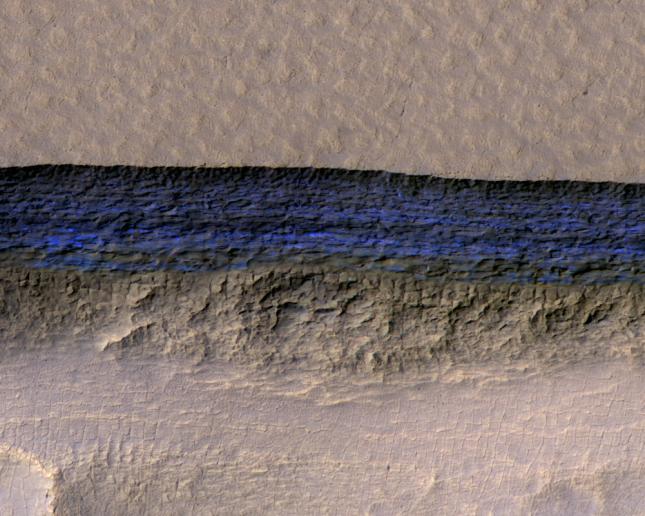[Le LMD publie] On the stability of subsurface ice on Mars

Although Mars today is an arid desert, large quantities of water ice are buried underground near the poles, equivalent to the terrestrial permafrost found at high latitudes. From a scientific point of view, this ice could hold the secrets of Mars’ past climates and is therefore of great interest in a potential sample return. From another point of view, this ice could serve as a resource for future human missions to the Red Planet. However, this ice is confined to high latitudes, inaccessible to future Martian landings.
In today’s climate, this ice cannot survive near the equator. However, previous studies have shown that this buried ice could be stable at accessible depths below pole-facing slopes up to latitudes of 25°, i.e. close enough to the equator for a crewed mission. Lucas Lange, a PhD student at , working with an international team, has recently shown that this assumption could be questioned. Indeed, their results show that, contrary to the arguments put forward in the literature, the slopes close to the equator (20°-30°) may in fact be too warm to allow subsurface water ice to be stable, and that the observations that suggested the presence of ice beneath these slopes can in fact be explained differently by a new Martian climate model developed at LMD. Thus, the widespread presence of water ice under these slopes at subtropical latitudes has not been demonstrated. However, the research team did show that the model could not rule out the presence of ancient ice reservoirs, which would be slowly sublimating today. The new studies currently being carried out at the LMD seek to understand whether this past ice could have survived to the present day.
These results have been published in the journal Geophysical Research Letters: Lange, L., Forget, F., Vincendon, M., Spiga, A., Vos, E., Aharonson, O., et al. (2023). A reappraisal of subtropical subsurface water ice stability on Mars. Geophysical Research Letters, 50, e2023GL105177. https://doi.org/10.1029/2023GL105177

